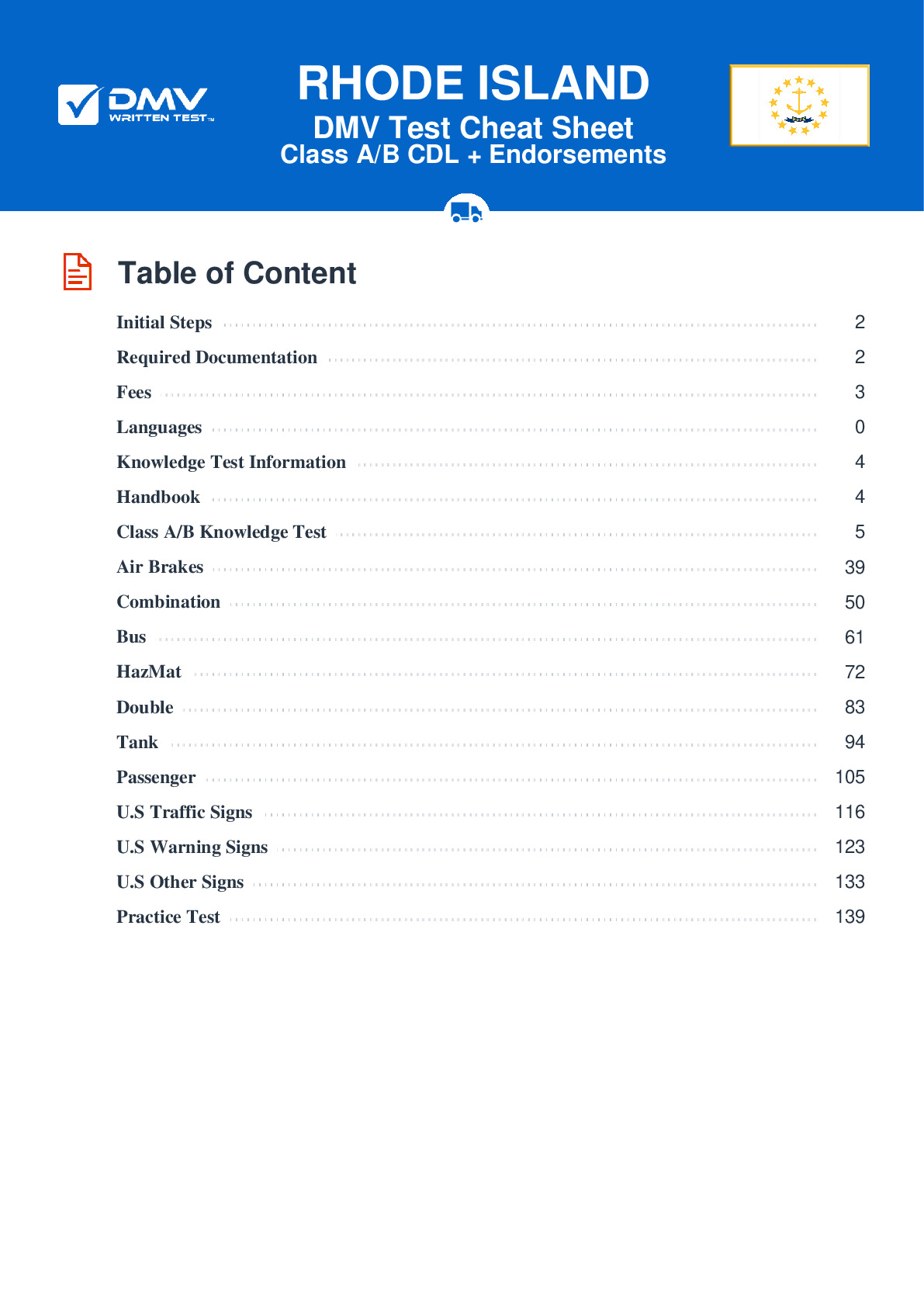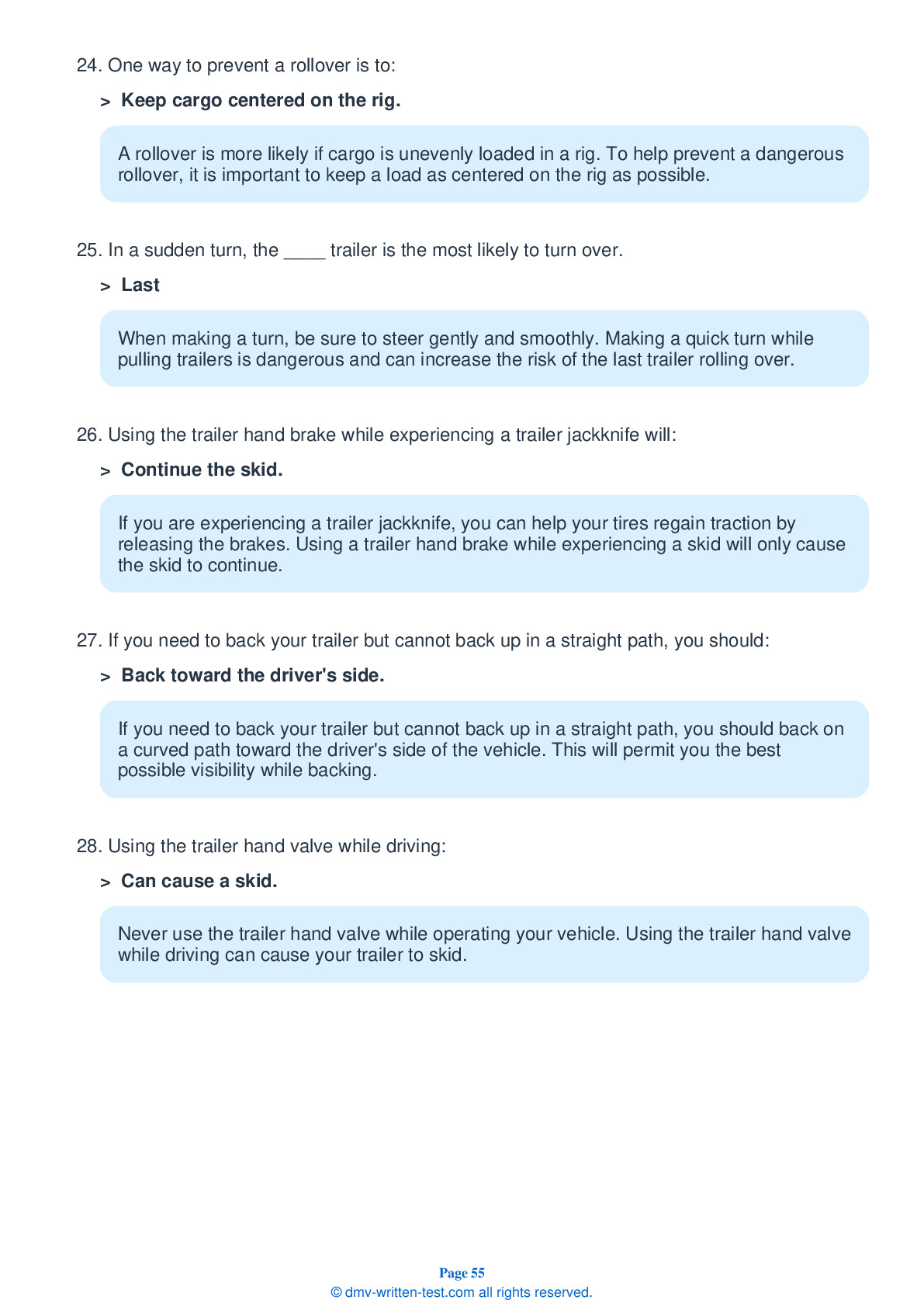Air Brakes
This endorsement is required for driving a vehicle with air brakes. To receive this endorsement, applicants must pass a written test. The test consists of 25 multiple choice questions. Each question has three answer choices. To pass, the applicant must answer at least 20 questions correctly. Test questions come from the Rhode Island Commercial Driver License Manual. Questions come from the chapter covering: Air Brakes. The Air Brakes endorsement may be used with the Class A, B or C CDL.
Number of Question
Passing Score
1. What is brake lag?
Explanation
Because air takes time to flow through the air lines to the brakes, air brakes cannot begin working instantly. There is often a brake lag of at least one-half of a second between the moment the brake pedal is pressed and the moment the brakes begin to work.
2. The air storage tanks:
Explanation
The air storage tanks in an air brake system store compressed air to be used for braking. They hold enough air for the brakes to still be used several times if the compressor stops working.
3. An air compressor governor controls:
Explanation
In an air brake system, the air compressor governor controls when the air compressor pumps air into the air storage tanks.
4. Which of the following is not part of a vehicle’s air brake system?
Explanation
Components of an air brake system include an air compressor, an air compressor governor, air storage tanks, air tank drains, an alcohol evaporator, a safety valve, a brake pedal, foundation brakes, supply pressure gauges, an application pressure gauge, a low air pressure warning signal, a stop light switch, a front brake limiting valve (on some older vehicles), spring brakes, and parking brake controls.
5. Brakes out of adjustment will:
Explanation
Brakes out of adjustment will fade before those that are properly adjusted. Brake adjustment must be checked frequently to help prevent brake issues.
6. Friction in an S-cam brake is caused when the brake shoes and linings:
Explanation




